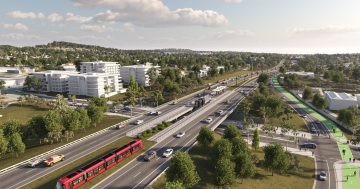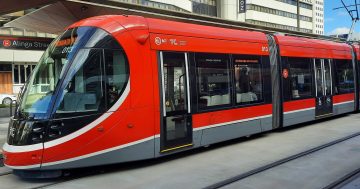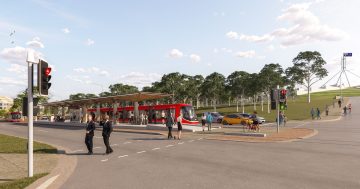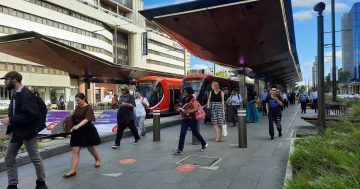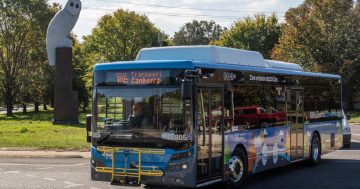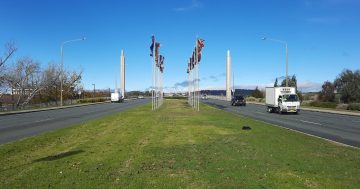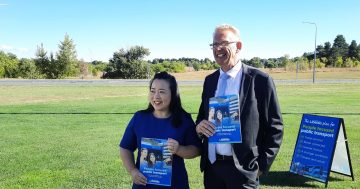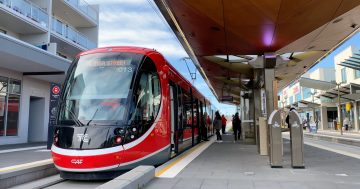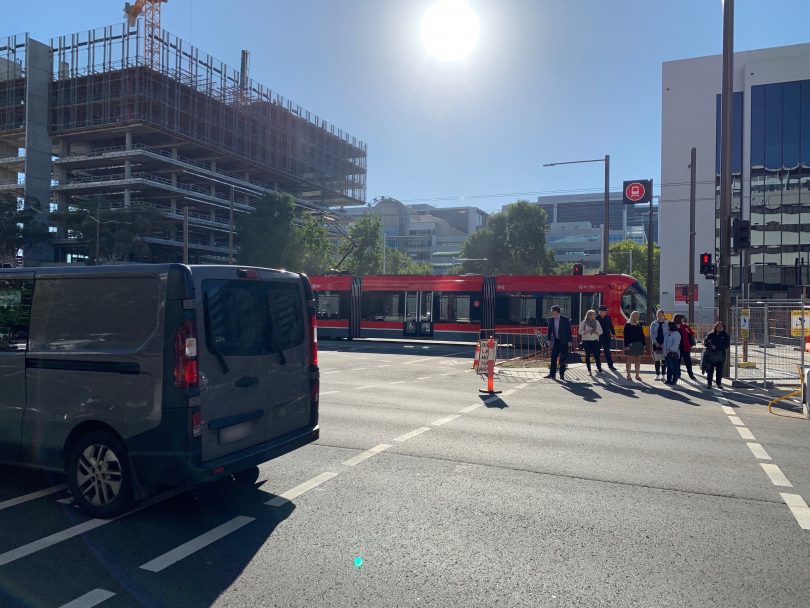
Light rail is taking Canberra on the fast track to urban densification. File photo.
It’s official: Canberra is getting light rail because it facilitates urban renewal. Thus spake the government at last year’s inquiry into Phase 2 to Woden.
In fact, the government has been saying this since 2013, when its own report on the case for light rail pointed out that a modern bus transit system could meet all public transport objectives just as well for half the price.
The report advised the government to promote light rail as facilitating urban renewal in a way buses could not. This was to be the tie-breaker between buses and trams.
But will the current light rail project optimally deliver on those goals? Light rail carries more people more comfortably and more quickly than standard buses. It is, however, much more costly.
Consequently, it is best introduced where there are already centres of people concentration like universities, colleges, hospitals, stadia, cinemas, restaurants, shops and large employers.
Only there will light rail encourage people out of cars, reduce congestion and speed up public transport travel times. But Gungahlin has no major employer and its retail centre is relatively small. Nor are there any universities, hospitals or large schools along the route.
Mitchell never hosts masses of people and the racecourse and EPIC only occasionally. There are already people in apartments and hotels along Northbourne Avenue but one would hardly build light rail for them alone.
Or rather, the route does not yet have the required concentration. The government believes this can be retrofitted: massive densification will create the throngs light rail needs to be cost-effective. In addition, these masses will bring ‘life’, in particular, commercial life, to the route.
They will encourage businesses to set up shop there, which will, in turn, draw people as customers and patrons to the route, thereby making light rail even more cost-effective. Property values will go up, thereby increasing rates, and thriving businesses can be harvested for revenue.
Perhaps, too, more of this extra value can be captured by imposing special levies for the privilege of living or setting up shop on the route. Light rail will facilitate urban renewal and urban renewal will facilitate light rail.
But will densification create the concentration of people light rail needs while allowing it to make the best possible contribution to public transport across all of Canberra? Will densification create this concentration without undermining the quality of the urban renewal light rail is supposed to create?
The 37,000 people the government plans to pack along the route will not want to travel only to destinations on the route. So unless these people have an integrated bus system that permits them to move quickly and efficiently to and from other destinations, they will be using cars a lot, possibly even most of the time.
This will create congestion and reduce the quality of the ‘life’ created by light rail. A well-integrated bus service with frequencies equal to the tram is thus essential to making the best possible contribution to public transport and urban renewal.
Yet densification makes it harder to achieve such a bus system. The residential concentration of people around the tram generates a low-intensity stream of diverse transport needs across the entire day which the tram will not meet.
Creating the numbers needed for light rail through densification will thus increase the task for buses even as light rail takes resources away from them. Congestion around the tram line will be greater, the quality of urban renewal lower and public transport’s challenge to the car will be weaker than they could be.
The way Canberra is introducing light rail—building it on a route with insufficient numbers, then retrofitting the numbers through densification—is inefficient. Indeed, it is grossly inefficient.
Canberra already has a route with the required centres of people concentration on or near it: Belconnen via Civic to Woden, linking Belconnen Mall, the ABS, a new hospital, University of Canberra, Radford College, Bruce Stadium, Calvary Hospital, the ANU, Civic, the Parliamentary Triangle and Woden Town Centre.
This route does present more engineering difficulties, but if these difficulties rule this route out, then they rule light rail out since no other route is more suitable.
Better then to improve the bus system massively and wait until its success made an upgrade to light rail or some other technology more viable. So why has the government embarked on the current light rail project? It wants the revenues it believes densification will bring. Andrew Barr has traded the best possible improvement of public transport and the quality of urban renewal for this pot of gold.
Bruin Christensen is a philosopher in the School of Philosophy at the Australian National University and writes extensively on a number of subjects. Visit his website for more details.












